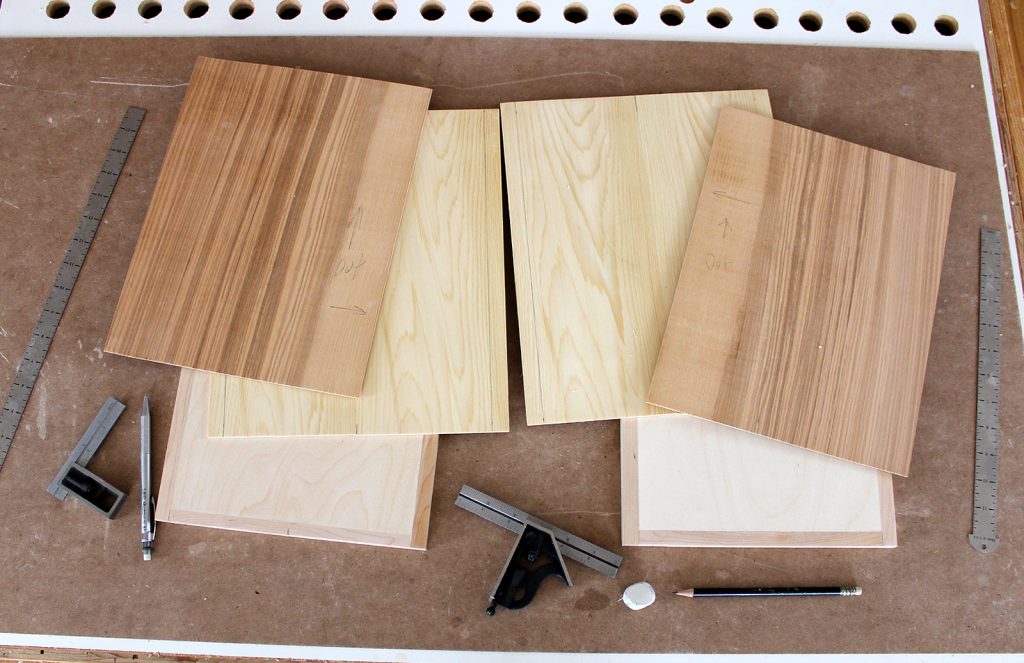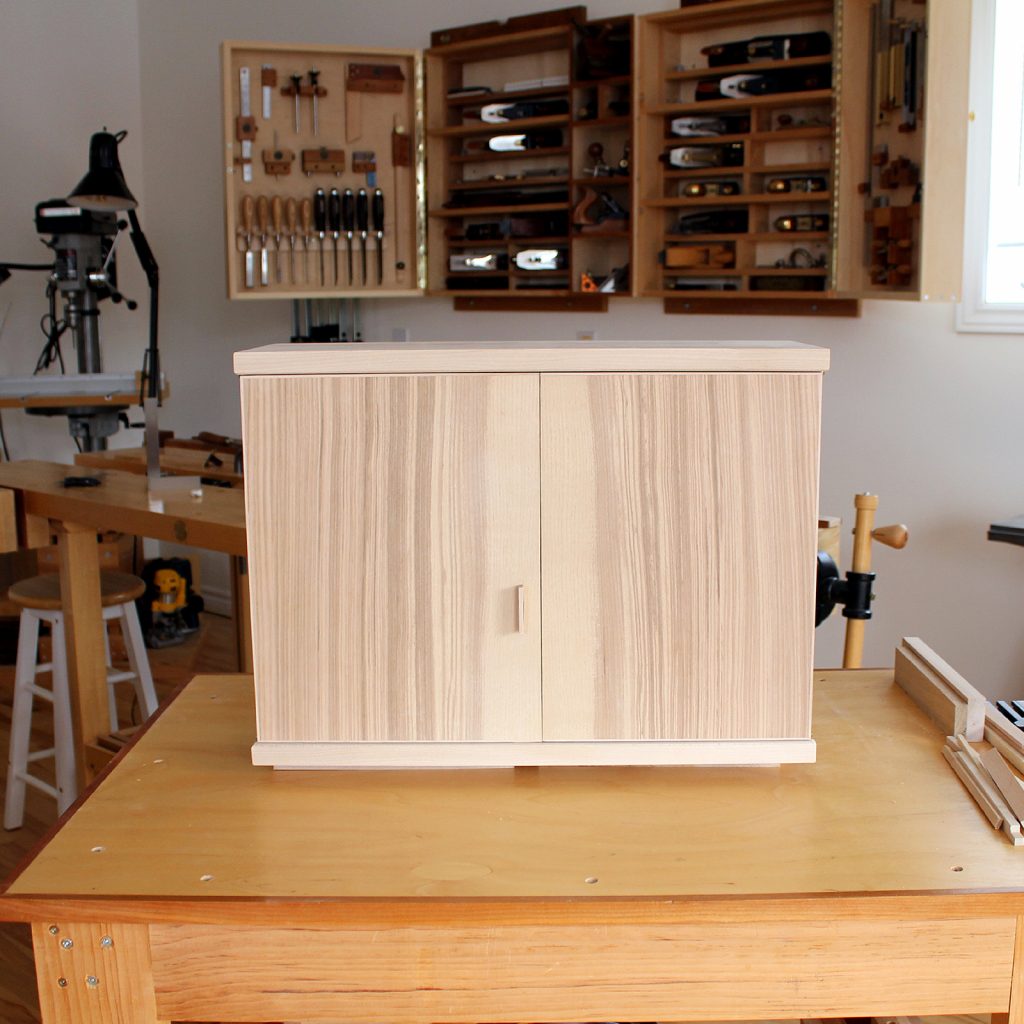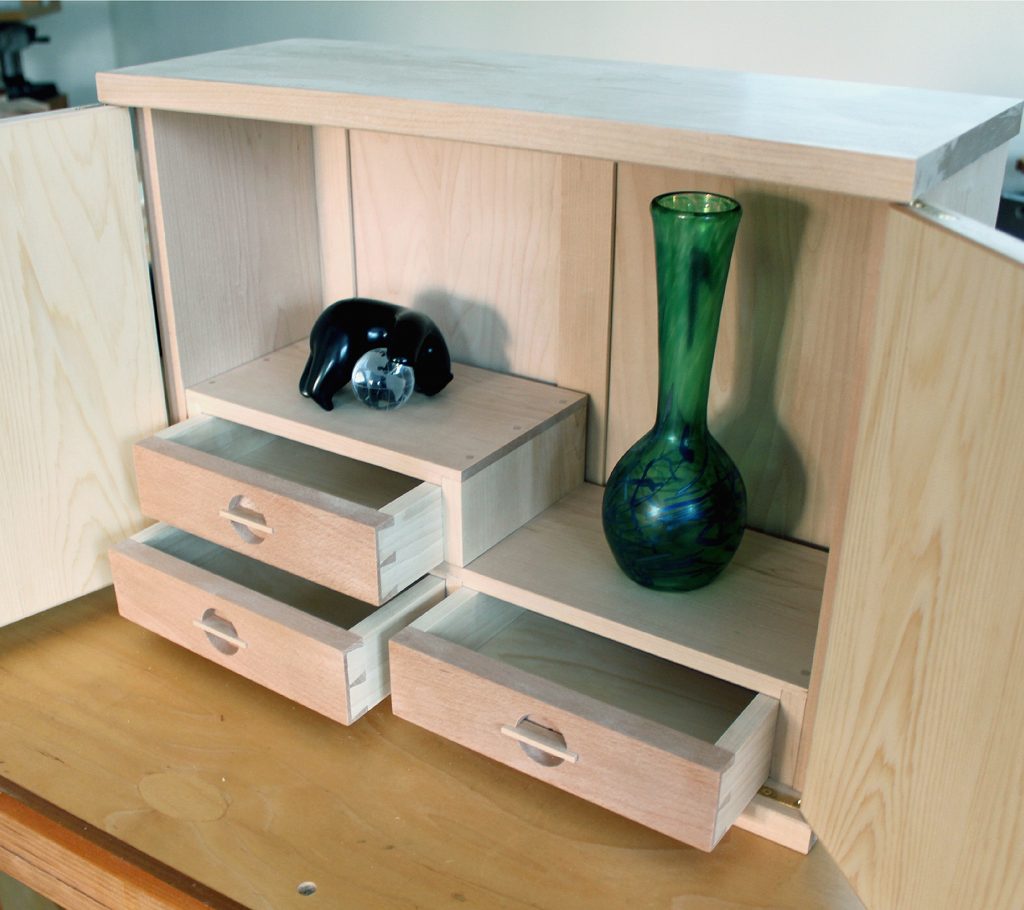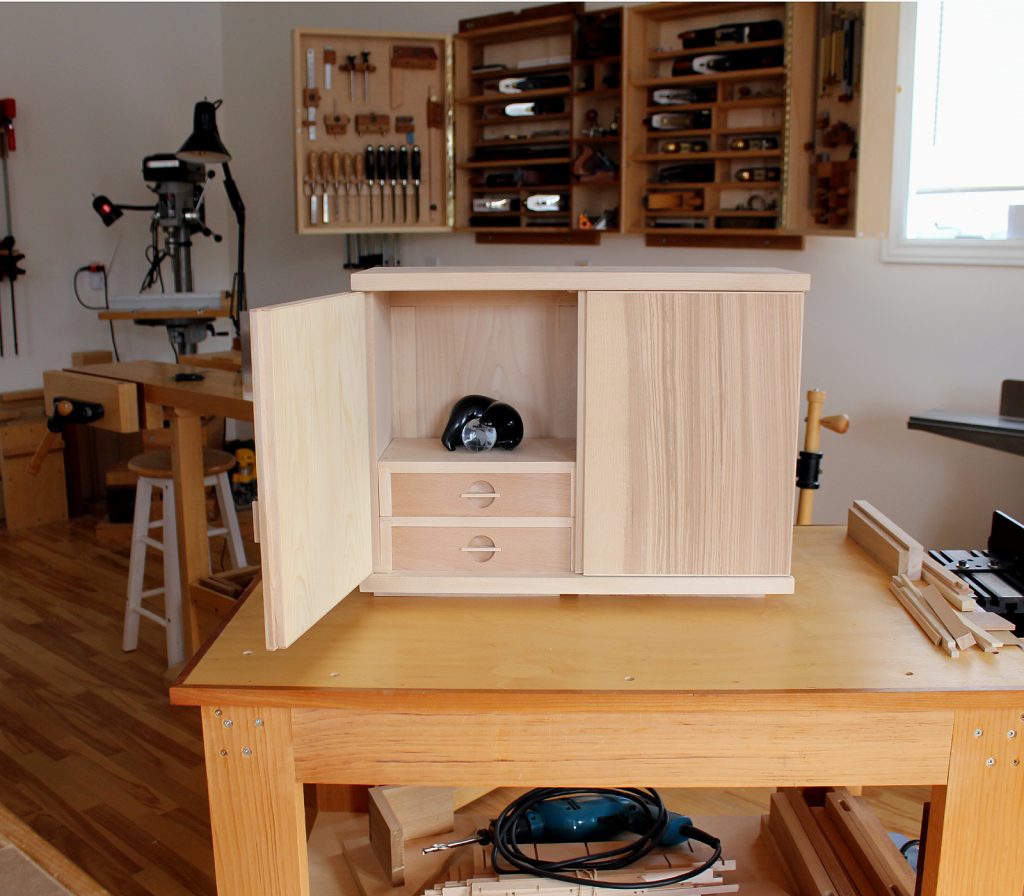My latest furniture piece revolves around a Zebrano board and the interesting graphics it exhibits. I had been saving this particular board for a while and was keen on using it in a piece of furniture. The thought came to me to incorporate it as door panels in a small cabinet. As with any figured board, there is usually a limitation in how much yield we can extract from it. The dimensions of the board also contribute to the size of veneers that can be gained from dimensioning and resawing. So, after these steps I was left with two book-matched shop-sawn veneers to use as door panels built up over a substrate. I maximized the size to use the full extent of the Zebrano veneers and included similar sized veneer sheets for the back of the substrate. As a best practice, I apply veneers to both sides of a substrate to ensure the panel will not cup in either direction. Veneers applied to both sides create equilibrium and dimensional stability. The substrates have hardwood lipping all around and Zebrano veneers and backing veneers as seen below.

The build began with case construction followed by a back panel and ultimately the doors were constructed. There are several intermediary steps involved. I usually create the case and then use the door openings to determine the final dimensions of the doors. I had already created the substrates as above and veneered the front and back veneers to form two slightly oversize door panels.
The cabinet is to be wall-mounted so it is smaller than standalone cabinets I typically make. This involves lightening the components forming the cabinet. The cabinet is hung using a metal French cleat system. I attach the French cleat to studs in the wall through drywall.

The mortises for the knife hinges are created in both door panels as well as the case. This step involves careful shimming of the door to ensure the reveal is correct all around. Another interesting element in the design are the drawer pulls. Since the cabinet is not deep, I wanted to maximize the drawer depth. Conventional pulls would lose close to one inch. Instead, recessed pulls are ideally suited to shallow drawers. The completed cabinet shown below shown before finishing. The finish will be multiple coats of thinned super blonde shellac.

 Also interesting are the dovetailed drawer fronts. I was striving for a wood tone not as dark as cherry and not light, just sufficient to provide some contrast to the maple. The wood originates from leftover European Beech offcuts used in a cabinet made in 2008 that was featured in the forward of the “500 Cabinets” book.
Also interesting are the dovetailed drawer fronts. I was striving for a wood tone not as dark as cherry and not light, just sufficient to provide some contrast to the maple. The wood originates from leftover European Beech offcuts used in a cabinet made in 2008 that was featured in the forward of the “500 Cabinets” book.

The doors overlay each other through a lip and rabbet. Since the focus of this cabinet are the book-matched door panels, I spent extra time getting the graphic orientation correct. Normally, I install a single door pull on the right hand door. To keep the graphics symmetric, the door pull was instead installed on the left hand door. This change also slightly offset the center of the doors to the right. The modification worked and the door graphics are balanced!

